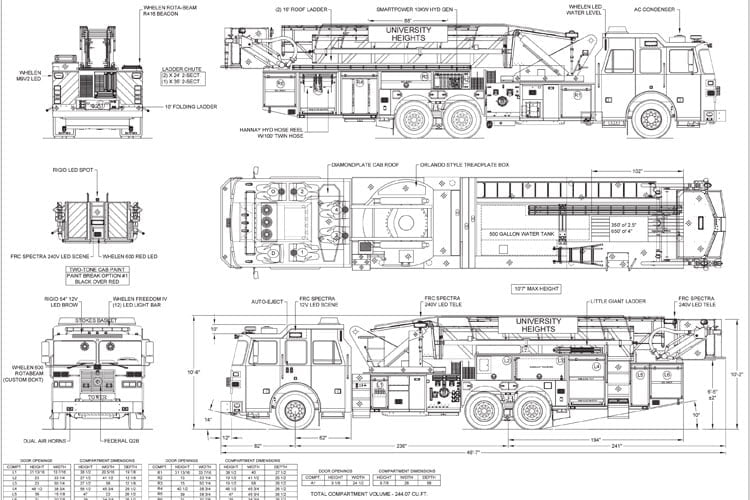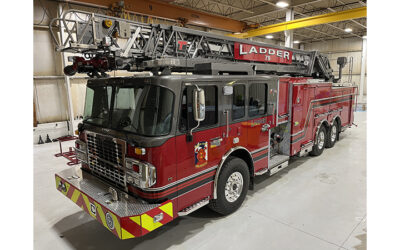By Bill Adams
The presumption in this commentary is a purchaser is participating in the public competitive bidding process when purchasing a new fire truck. Before continuing, several misguided perceptions should be addressed. One is the naïve belief that purchasing specifications will never favor a preferred vendor. Another gullible assumption is that a purchasing specification only establishes a minimal level of design and construction features. And lastly is the false belief that all purchasers and prospective vendors play nicely in the sandbox.
Related Content
- Defending Specification Requirements
- Why Is This in Your Specs?
- Changes in Apparatus Purchasing and Attitudes
In reality, the world of competitive bidding can be far from serene. It can be downright vicious, cut-throat, and deceitful. This narration covers the possible abuse or misuse of the “Bidder Complies” format. The Bidder Complies format is almost a fire service standard when writing purchasing specifications. On the right side of each page are two vertical columns under the title BIDDER COMPLIES. One is headed “YES” and the other “NO.” Bidders are supposed to check off the applicable column next to each standalone heading, paragraph, or sentence as directed. Instructions often have bidders “number” each exception (NO answer) and provide reasoning for the exception on a separate page. The process can be made confusing.
When vendors and for hire spec writers help fire departments write purchasing specifications, they might surreptitiously make bidding so difficult and confusing that some vendors will decline to submit a proposal. Some specification writers, whether they be vendors or consultants, can do a very good job of subtly influencing participation. Apparatus purchasing committees (APCs) attempting to write their own purchasing specifications by mimicking manufacturers’ specifications might get so wrapped up in writing the verbiage that their document becomes confusing and self-contradictory.
Adding superfluous and ambiguous wording to a document is an open invitation to create inconsistency and confusion and can possibly create a challenge to the purchasing authority. It is common knowledge but seldom admitted that a preferred vendor may help a fire department write its purchasing specifications. Bear in mind that some disgruntled nonpreferred vendors may cast dispersions and question the veracity of the document. (i.e. they are sore losers)
Embarrassing is having potential bidders question the intent and meaning of the specification’s verbiage. No purchasing agent or APC wants to defend an accusation that their written specifications are driving prospective bidders away from the bid table. In some scenarios, it may be illegal to purposefully discourage competitive bidding. Following are a couple examples from the “Instruction to Bidders” portion of a purchasing specification that could be construed as making life difficult for bidders or influence whether or not they bid.
- The 140-page long purchasing specification averaged six places per page where the bidders had to denote YES or NO for bid compliance. In what could be interpreted as making bidders’ lives miserable, the specification writer noted “check marks” are not an acceptable method of indicating compliance and the actual word YES and NO must be written or printed. Why force the writing of the words YES or NO over 800 times?
- No doubt an unintentional yet aggravating occurrence is forcing a bidder to say yes or no in one location and asking a similar or contradictory question about the same topic in another area. As an example, a specification reads: “These specifications are based upon design and performance criteria which have been developed by the fire department as a result of extensive research and careful analysis. Subsequently these specifications reflect the only type of fire apparatus that is acceptable at this time, and all specifications herein contained are considered as minimum. Therefore, exceptions to the specifications will not be acceptable.” Those 60 words could have been summed up in eight: “Exceptions to the specifications will not be acceptable.” Purchasers are not obligated to say why exceptions are not allowed.
- Yet, in the same document, another sentence says: “If a product brand name is specified and is commercially available to all bidders, an exception to such items is not acceptable.” Why bother with this requirement? It is already covered with the prior all-inclusive statement “Exceptions to the specifications will not be acceptable.”
- Then, in the same document was the statement: “Exceptions shall be allowed if they are equal to or superior to that specified and provided they are listed and fully explained on a separate page.” That statement directly contradicts the previous two. Is the spec writer confused? In one place the specification explicitly states no exceptions will be allowed. In a second place it states the same but specifically denotes it pertains to brand names. But now, the verbiage says exceptions will be allowed. Which requirement should bidders adhere to? Do the bidders respond YES or NO? Is it “legal” to reply in the affirmative that no exceptions will be taken and also in the affirmative that exceptions will be allowed?
Perhaps it would be more equitable and less confusing to say something similar to: “Unless specifically prohibited herein, exceptions are allowed provided they are clearly explained on a separate sheet(s) titled ‘Exceptions to the Specifications’ in the same bid sequence, citing the page and paragraph number(s) of the purchasing specifications, how the proposal deviation is different, how the deviation meets or exceeds the specifications and why it is necessary.”
There should be a justifiable reason why every word is written into a purchasing specification. Don’t ask a question that can’t be answered.
BILL ADAMS is a member of the Fire Apparatus & Emergency Equipment Editorial Advisory Board, a former fire apparatus salesman, and a past chief of the East Rochester (NY) Fire Department. He has 50 years of experience in the volunteer fire service.






